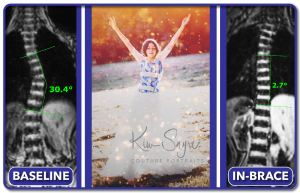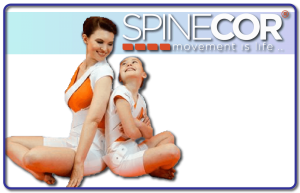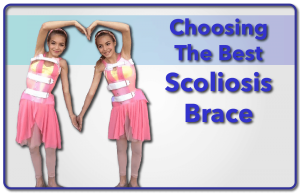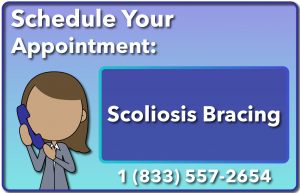Scoliosis Brace Treatment
You or your child has been diagnosed with scoliosis, and you know you will need a brace for treatment. But which brace is the best for you or your child’s curve? Using the correct brace can mean the difference between bracing success and failure. Additionally, bracing is the only scientifically proven non-surgical treatment for curves 25º and above.
The Silicon Valley BraceTM

The Silicon Valley BraceTM is a hyper-corrective hard brace designed to help straighten the spine and prevent surgery. The brace is usually prescribed along with a hyper-corrective treatment program. It is available in day; night; and sport versions to ensure the brace is worn as much as possible to maximize treatment success.
Available Options
Full Time Day & Night Brace
A highly corrective rigid brace, custom made by your treating doctor, trimmed to allow comfortable wear during the day.
Nighttime Brace
Nighttime braces can provide even more correction to the spine than a full time brace, but are too long to be worn when upright during the day.
Light Sport Brace
A shorter brace, typically about half the height of a standard. Trimmed to allow maximum flexibility for activities and sports, as well as maximum concealability for social events.
Indications (who needs it)
Growing children and adolescents, especially those with:
- Curves over 25 degrees
- Complex S-shaped curves
- Rotation or twisting is present
Additional Info
The Silicon Valley Brace is a hyper-corrective back brace that does more than just hold a spine in place and prevent worsening; it actually pushes the spine and helps to make it straighter. Using a unique three dimensional scanning method that captures the spine in a corrective position; a highly attentive fitting process; and continual improvement, the Silicon Valley Brace is designed from the ground up to straighten the spine as much as possible and hold it there so it can grow straighter with permanent results.
SpineCor® Soft Brace

The SpineCor soft brace is a flexible brace designed for both children, teens, and adults. It can help alleviate pain in adults and also assist with straightening small curves.
Available Options
SpineCor® For Children
A major advantage of the SpineCor® soft brace is that it is flexible and easier to wear than a hard brace, allowing more freedom of movement and activity. The disadvantages of the SpineCor® brace is that because it is a soft brace, it is not as corrective as a hard brace, and thus cannot significantly correct rotation or complex curve patterns (ie. S curves) and therefore is limited to smaller curves.
SpineCor® For Adults
For adults, the SpineCor® soft brace helps to reduce pain and improve posture. Additionally, it can help to straighten some scoliosis curves, especially those which have dropped off to one side (postural collapse).
Indications (who needs it)
The SpineCor® soft brace is recommended for children who have:
- Curves under 25º
- C shaped curves (not S shaped)
- Little to no rotation
Additional Info
The SpineCor® soft brace has been around for over 20 years and was the result of a multi-million dollar Canadian research study to develop new and improved treatments. While technically a soft brace, numerous studies have been performed over the past 20 years attesting to the effectiveness of the SpineCor® brace.
Which Brace Is Right For Me?
Bracing goals are different for children and adults, largely due to the fact that children are still growing while adults are skeletally mature. Similarly, each curve type needs to be approached differently and brace treatment varies depending on the size, location, and type of scoliosis curve. You can schedule a bracing appointment and one of our doctors will recommend the best brace for you or your child’s curve based on your exam findings. You can learn more about the various bracing options below.
Frequently Asked Billing Questions
Are scoliosis braces covered by my insurance?
Scoliosis braces are often covered by insurance, with a referral from a doctor greatly aiding in obtaining coverage by your insurance provider. While we are out of network for all insurance providers, our staff is happy to assist in providing the appropriate codes (ie. ICD-10) to assist in obtaining insurance coverage.
Written and reviewed for scientific and factual accuracy by Dr. Austin Jelcick, PhD and Dr. Matthew Janzen, DC. Last reviewed/edited on February 27, 2020.


